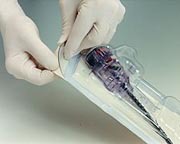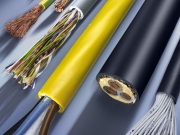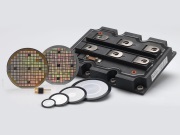
Irradiation and Applications
Irradiation is used in a variety of industries to modify products to meet market expectations. This includes irradiation using gamma rays, most often from the radioisotope cobalt-60 or using machine derived radiation from electron beam or X-rays.
Single use medical products are often required to be supplied 'sterile' and such sterility is often acheived through the use of ionising radiation as a post-production process. This is regulated by International Standards such as ISO 11137. Products validated and produced according to such standards and irradiated with gamma, electron beam or X-ray irradiation will generally have a sterility assurance level (SAL) of 1E-6, ensuring that less than one in a million product units will have a single viable micro-organism and therefore cannot be a source of infection
Polymers are irradiated to enhance their properties - generally to increase toughness and melting point. This is required to meet the in service performance requirements, for example for demand applications in automotive and aerospace. Irradiation is also an essential step in the production of heat-shrink tubing. Irradiation is generally a fast, continuous process using high-power, low or medium energy electron beam accelerators.
Food is treated with ionising radiation either to eliminate food bourne pathogens (such as e coli or salmonella) which kill thousands of people each year or to prevent the importation of viable food bourne pests (phytosanitary applications). Astronauts have been eating 'sterlised' food since the early days of the space programme. Only very low doses are required which have no impact on nutritional content or taste. Food irradiation is endorsed by the World Health Organisation.
Power semiconductors are treated with ionising radiation to modify the charge carrying characteristics optimising the switching time and reducing switching losses. Irradiation may be in the form of ions or electrons (or both). Ions deliver dose at a specific depth within the silicon wafer to modify specific structure (analogous to the precision of proton cancer therapy) while electrons are used to deliver more uniform dose throughout the device.
Gemstones can be enhanced through the application of ionising radiation to change their colour or to reduce the appearance of imperfections. This can involve neutrons, gamma rays or electrons, or combinations of the three. The vast majority of blue topaz gemstones are made blue artificially by the application of such treatments. In fact naturally blue topaz is generally coloured that way due to long-term irradiation in the ground from natural radioactivity.





